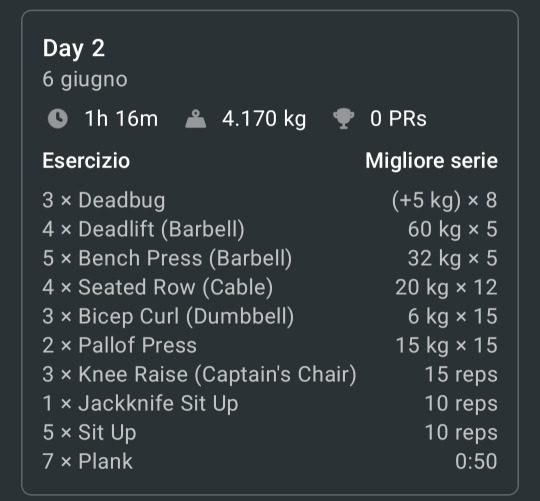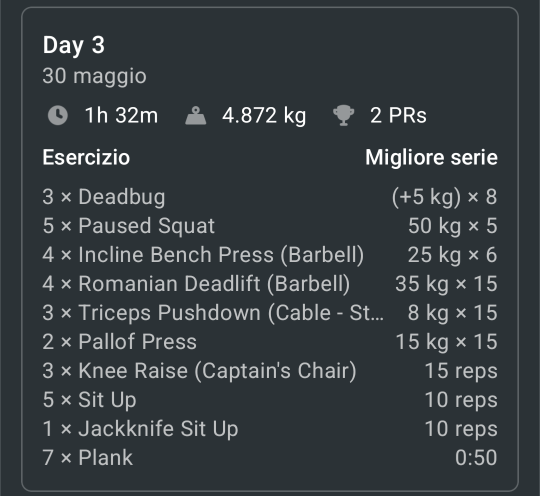#i know you're doing a bodyweight routine and the weight room is intimidating as a concept
Explore tagged Tumblr posts
Text
i'm fully about leaving people be and not judging other people's routines at the gym
but if you've ended up making a Contraption, you should have figured out several steps ago that you've gone off the rails
#please don't tie two weighted gym sticks together with jump rope#i know you're doing a bodyweight routine and the weight room is intimidating as a concept#but this gym sees 80% elderly people#and barbells were made for exactly the purpose you need#bodyweight routines tend to recommend doing your deadlifts with proper weights for a reason#please i am trying to do my stretches and the calisthenics room is the only proper place for it#(i blame the stark bullshit gendering of exercise for making ppl think they can't use the actual tools for their exercise)
6 notes
·
View notes
Note
do you have any tips/resources for a beginner who wants to get into weightlifting?
thank you for asking!! I love this question. I love lifting! It's Good For You (helps increase bone density & metabolic rate, and it's good for injury prevention and developing functional strength). It's also a really great confidence boost. 10/10 would rec lifting to every single person reading this — if it's an option for you, give it a try.
TLDR: familarise yourself with common exercises. pick a beginner program. follow it. profit!
A more involved answer, with resources and details, is under the cut
familiarise yourself with common exercises
There are hundreds of possible exercises out there to target each specific body part. However, most of those are what's called "accessory" movements, as opposed to "basic" exercises that will pop up over and over in most lifting routines. Ideally, you want to know how to perform these movements, using light weights or just your bodyweight until you feel comfortable with it.
CORE BRACING (ft deadbugs. genuinely lifechanging skill!)
Squats.
Hip hinge. This is useful for deadlifts, romanian deadlifts, kettlebell swings & similar movements
Push movements (for example: dumbell chest press, shoulder press etc)
Pull movements (dumbell rows & many others)
That said. Please don't stress too much over "good form". Each exercise has infinite variations and especially as a beginner, you won't be lifting heavy enough weights to make form optimisation a big concern. All bodies are different and our individual stances vary a lot depending on body proportions, flexibility levels etc. You just want to know HOW an exercise is supposed to be performed, in terms of: which muscles it activates? what am I supposed to get out of it? how to do it safely? Your bodyweight squat doesn't have to be flawless, it just has to be good enough.
BTW, you know when I said that there are hundreds of possible exercises out there? Here is a very detailed masterlist + exercise guide for exercises impacting each muscle group.
learn your way around a weight room, if you aren't familiar with it already.
Broadly speaking: the free weights (bar, dumbells, kettlebells) are good for compound exercises that involve multiple muscle groups. The various machines are ideal for "isolation" exercises that target fewer specific muscle groups.
If you already know what's what, then skip this bit! But I've talked to many people who feel a bit intimidated by the weight room because they feel out of place in it, and in my experience familiarising yourself with the general layout is a good way to take away that discomfort.
And, in case this is something you need to hear: you deserve to be there, you're not taking space, and most gymgoers just want to finish their workout and shower, and won't pay specific negative attention to you. Most gyms have a weight room manager or floor trainer, at least during some shifts, and they WILL be happy to help you. If you're someone who doesn't want to be bothered while exercising, just preventively introduce yourself, say you're new
pick a program
I highkey recommend following a pre-made program instead of just fucking about on your own. Here's why
programs are well-balanced in terms of volume and muscle groups, to ensure you don't overtrain one body part and leave other lagging
they have a built-in "progression scheme" that will allow you to move to a higher weight in an optimal way — basically, you'll see strength advantages sooner
they help navigate information overload. There is SO much information about fitness out there that acts as an entry barrier. Following a pre-made program really helps with that.
If you have a gym membership, you may have the option of one "free workout program" made by a trainer who works at the gym. If that's in the cards, I'd recommend going with that.
Otherwise, I strongly recommend the "programs rec guide" over at r/xxfitness, the female fitness subreddit (the name is 15 years old but it's a queer friendly, trans inclusive space). I haven't personally done any of those, but Meg Gallagher of Before the Barbell is very solid, and that's the one I'd suggest.
get ready for DOMS
Also known as delayed onset muscle soreness. It happens 1) when you go to the gym after a while or start exercising for the first time 2) when you train a different muscle group than usual 3) when you up the intensity of a workout.
Basically, you wake up in the morning and you go OUCH!! ACHEY. That's DOMS. It happens because your muscle fibres are suffering microtears and reknitting (stronker!!) and you will feel very stiff and possibly very swollen (muscles retain water).
It'll take a few days for it to go away. IT IS SAFE TO EXERCISE THROUGH DOMS; the only thing limiting you is if you're too achy to move effectively. I recommend eating something protein heavy (more on that below) and doing some gentle exercise to make it go away faster (walking, at home-stretches or yoga, swimming if it's an option, etc.)
You DON'T want to stay in bed the whole time, because that'll only make you more stiff and make it last longer. Note that "post exercise achiness" is something that WILL go away after the first couple of weeks or so, depending on your recovery (again, gentle exercise and/or going to the gym again when you're still a bit achey is actually preferred than being completely at rest until they're fully gone away). Long term, you're NOT supposed to feel high-level soreness after working out. "No pain no gain" is mostly bullshit.
evaluate your program!
I'm always saying this, but the best exercise is the one you actually stick with. If your exercise plan is dull or fills you with dread, it doesn't matter how good for you it supposedly is — ditch it. Give yourself a few weeks of whatever program you pick, then re-evaluate: what are your favourite exercises you've done so far? Which ones you don't like? What would you like to do? Programs can and should be modified according to your preferences, and it's a lot easier to customise something that works for YOU once you're a bit more familiar with everything. For example, maybe someone at your gym is doing kettlebell swings and you think it's cool and you'd rather do those instead of crunches for your abs. Why not. Just note down what's working and what isn't, and then re-evaluate (with gym trainers if that's an option, but also, I mean it, HMU whenever).
odds and ends!!
None of these things are a big deal, but they make your life easier:
Hydrate during a workout. If you're hydrated your body works better. You'll also probably sweat during your workout. Getting through 1L of water during a 1 hour / 1 hour and a half gym session is perfectly normal.
Warm up before lifting. Something like this for a general body warmup + lighter warm-up series before going up to the weight you actually want to lift. For example: if you're squatting the bar (20kg) I'd do one bodyweight squats series, and another series holding a 10kg kettlebell or dumbell. Cool down or stretch after!
Mobility work on a day off is a good idea, even if you're no longer suffering through soreness. This is my current go-to routine, I do it about 2x week.
If possible, eat protein the evening / day after a workout. Protein is great for building muscle, and you WILL see a noticeable difference in energy level and speed of recovery by upping your protein intake. Basically: if you usually eat lentils or fish twice a week, try to make one of those times your post-gym dinner.
(In general, as a beginner you WILL see results regardless, and you don't need to optimise nutrition or anything (not to mention, it can be overwhelming / complicated to deal with.) But if you're interested in the specifics of nutrition & exercise, HMU)
keep track of your workouts! I really recommend this; it can be very inspiring to have a backlog you can look at when you want to track your progress, and you want to establish a benchmark with yourself. It can be as simple as writing down gym days & numbers in your journal if you have one; personally I use the Strong app to save my routines, and every week when I log in new workouts I modify the values depending on what weight and # of reps I hit that week. For reference, this is what a week looks like on the Strong app for me



IF I'VE MISSED ANYTHING SHOOT ME AN ASK.
125 notes
·
View notes